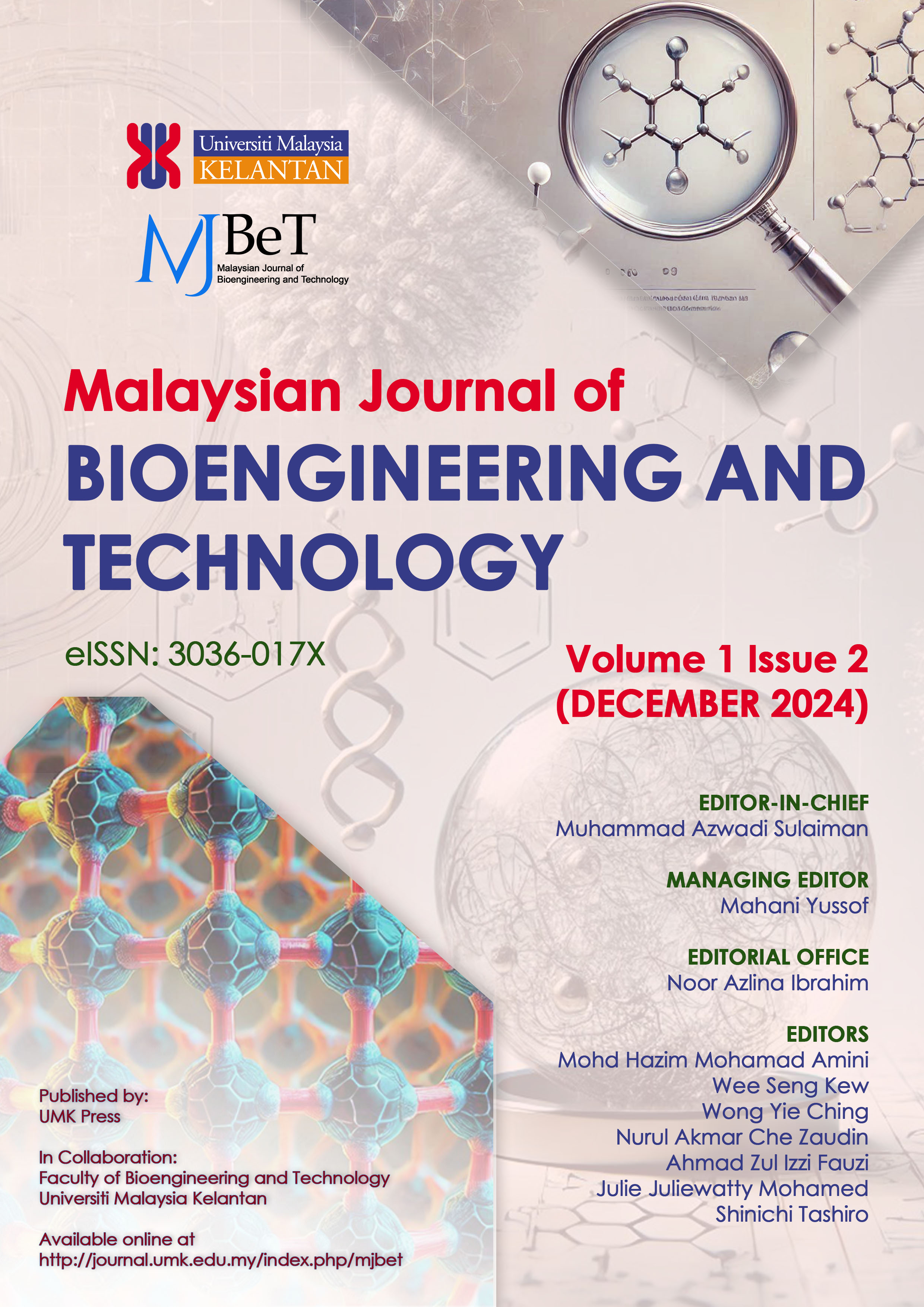Mechanical and Thermal Properties of Cellulose Nanocrystal/Graphene Nanoplatelet Reinforced Polylactide Acid Biocomposites
DOI:
https://doi.org/10.70464/mjbet.v1i2.1459Keywords:
Polylactic acid, cellulose nanocrystal, graphene nanoplatelet, mechanical properties, thermal propertiesAbstract
In this research, cellulose nanocrystal (CNC) and graphene nanoplatelet (GNP) were introduced as hybrid nanofillers at a total loading level of 5wt.% in poly(lactic) acid (PLA) as matrix material. PLA-CNC/GNP biocomposites were successfully fabricated with the utilisation of compression moulding to study the effect of CNC and GNP on the mechanical and thermal properties of the biocomposites. The produced PLA-CNC/GNP biocomposite materials, including pure PLA for comparison purposes, were characterised by mechanical and thermal properties. Overall, the results of the flexural properties showed that the PLA biocomposite had a formulation of 2.5 wt.% CNC and 2.5 wt.% GNP contributed significantly to the enhancement of flexural strength and the modulus, up to 47% and 76%, respectively. The thermal properties also seem to be optimally improved as the thermal stability of the biocomposite samples was analysed accordingly. Overall, the incorporation of CNC and GNP with 5 wt.% of total hybrid filler loading showed a favourable impact on the mechanical and thermal properties of PLA biocomposite for environmentally friendly automotive components.


